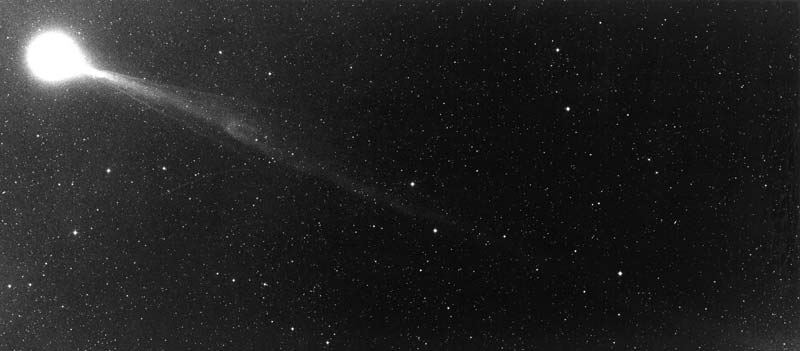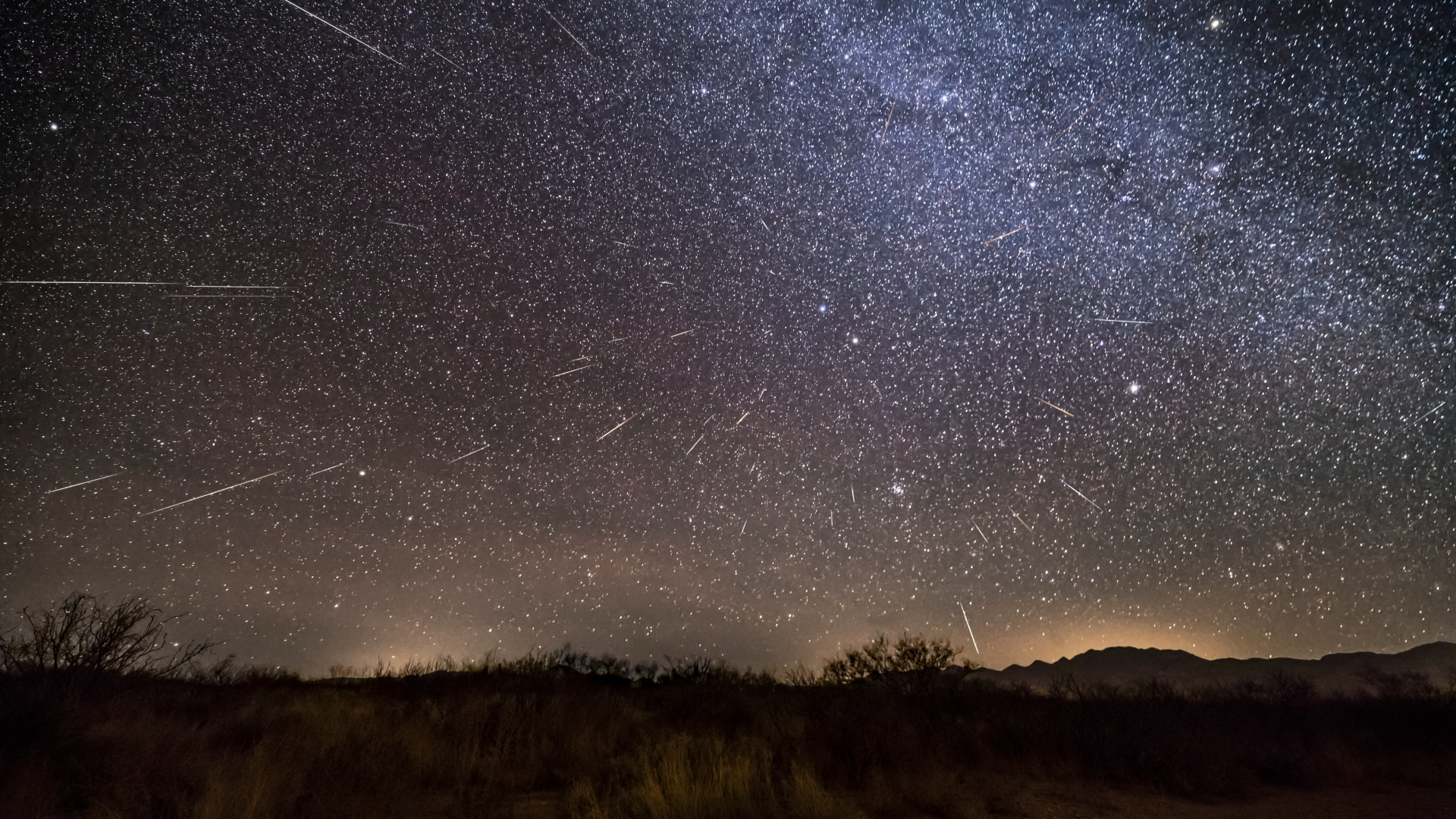Halley's Comet and Others May Be Stolen Goods

Famouscomets such as Halley, Hale-Bopp and McNaught may have formed around otherstars and been snatched into orbit around the sun back when it was packed closelywith hundreds of other stars, according to new simulations.
Researchersmodeled this process as an alternative to the standard picture of the formationof the Oortcloud, the roughly spherical body of comets that extends halfway to thenext nearest star and is believed to be home to so-called long period comets.
Untilnow, the leading model for Oort cloud formation held that Jupiter's gravityejected icy balls of protoplanetary material (planetesimals) from inside the solarsystem.
"Thecurrent thinking is that when we see a comet it represents the stuff from whichthe planets formed," said study researcher Hal Levison of the SouthwestResearch Institute in Boulder, Colo. "According to the standard model, weshould have an Oort cloud that's roughly a few percent as populous as the onewe see." [GreatComet McNaught photos.]
Inefficientcomet-mover
Theproblem with the standard model is its efficiency, Levison said.
AfterJupiter ejected the planetesimals, the gravity of surrounding stars had tonudge them just right to put them into orbit around the sun. Only three to fourpercent of planetesimals would make the grade, or enough to explain some 10percent of the Oort cloud's estimated 400 billion inhabitants.
Breaking space news, the latest updates on rocket launches, skywatching events and more!
Afterfailing to come up with a way of making the standard process more efficient,Levison and his colleagues finally decided to consider an alternative modelproposed 20 years ago but quickly abandoned as unnecessary and unworkable.
Inthis model, the young sun was part of a birth cluster of hundreds or morestars, each one with its own collection of planetesimals constantly being tuggedby the gravity of the surrounding stars.
"You end up with this hugepopulation of comets just floating among the stars in the starcluster," Levison said.
Asthe stars finally begin to spread apart, each one pulls comets with it like alight bulb drawing gnats.
Levisonsaid his "duh" moment came when he realized that the radius of theOort cloud is roughly the same size as a star-forming region in a birthcluster.
Thenumber of comets generated by the model depends on a few factors that aren'twell known, including the mass of a typical protoplanetary disk, the masses andorbits of gas giants in a typical planetary system and the average mass of aplanetesimal around the gas giants.
Usingour solar system as a guide, Levision and his colleagues find that the birthcluster model produces more than enough comets to fill the Oort cloud,suggesting that the 90 percent of the Oort cloud that goes unexplained in thestandard model could have an extrasolar origin.
Cometorigins debate
Giventhe uncertainties in the model, some researchers remain skeptical.
"I am not entirelyconvinced that this theory has obvious advantages over the more conventionalone," said astronomer Julio Fern?ndez of the Instituto de F?sica inMonteviedo, Uruguay.
Hesaid it's also premature to claim there's an inconsistency between the observednumber of Oort cloud objects and the number expected from standard theory.
"Rightnow we're scrambling to accommodate this new idea and see what new tests we candevise to help test the possibilities presented here," said planetaryscientist Michael Mumma of Goddard Space Flight Center.
Mummasaid that cometsformed around other stars could have different chemical signatures than thoseformed around the Sun, as a consequence of x-rays from brighter starspenetrating deep into protoplanetary dust.
"Cometsthat formed within [reach] of the sun are likely to be very different fromthose that formed further out," he said.
- Gallery: The Great Comet McNaught: Part 1, Part 2
- The Best Comets of All Time
- New Comet Visible in Early Morning Sky
J.R. Minkel covered space, physics, cosmology and technology for Space.com, Live Science, New Scientist, Popular Science, Discover, and Scientific American, all while writing his own blog A Fistful of Science and authoring a book entitled The Instant Egghead Guide: The Universe. Minkel earned a master's degree in Science and Environmental Reporting from New York University and a B.S. in Molecular Biology from Vanderbilt University, where he dabbled in zebrafish genetics.
